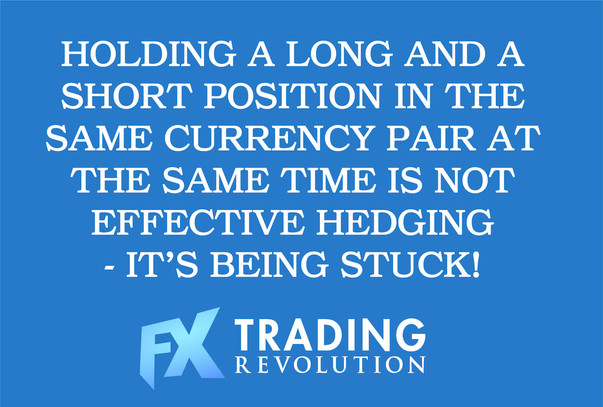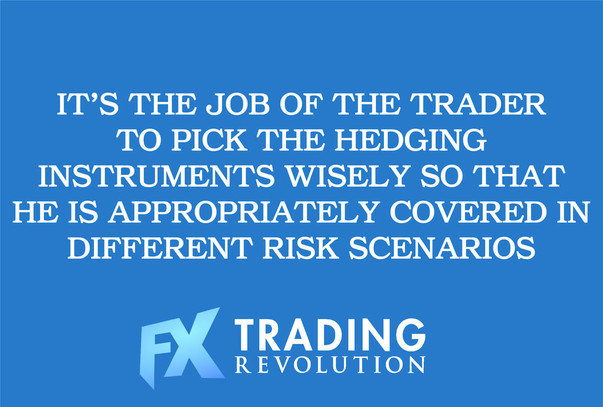In investing, a hedge is simply protection against the risk that a particular investment has to it. And, as we all know, all investments come with an inherent risk attached to them.
In fact, all assets and goods that we own can decline in value over time, and for us, that is the main risk of holding them. But the interesting point that most people don’t realize is that they are always invested in something.
For example, if you hold US Dollars, or if you are receiving payments in US Dollars while it’s not your domestic currency, then you are basically long the Dollar and you are exposed to the risk of it falling in value. If you own a house you are exposed to the risk of its price falling. Whether it’s a currency, real estate, a commodity or something else, if you hold it or own it there is a risk that its value may decline.
While most people will not think of ways to protect their assets or investments in such cases, businesses and professional investors are always thinking about this and are looking for ways to do so.
Hedging Instruments – Options, Futures, Forwards
The classic example of a hedge is the case of a company doing international business.
By default, this business would be exposed to fluctuations in the currency market and the company can, therefore, see their profits greatly reduced or even completely erased in case the currency in which they receive payments depreciates.
This is why most international businesses use futures or forwards contracts to “hedge” or to protect their foreign profits from adverse market moves. A company that is highly dependent on commodity prices will also usually hedge against adverse moves in the price of the specific commodities that they need for their business.
Options, Futures, and Forwards are financial contracts that were created for the purpose of offsetting risk. We discuss these 3 groups of financial instruments in some of our posts on the different types of investments that are available to traders and investors, so we will not get into more detail about them here.
Although these more complex financial instruments are rarely available through the regular Forex Broker, it’s important for any retail trader to understand that these are the primary instruments through which companies and professional investors hedge their exposure to risk. Those who would like to use or trade them will need to find a specific broker that offers these types of investments.
Now, let’s take a look at some more basic ways that Forex traders can hedge their spot positions.
Hedging in retail Forex trading – The big misconception
First, let’s clear up a very common and big misconception of retail Forex trading.
Usually, the retail Forex crowd understands hedging as buying and selling the same currency pair at the same time. For example, a trader may hold a long and a short EURUSD position at the same time.

However, nothing could be further from the truth, and hedging of this sort is certainly not what professional investors are talking about when they refer to hedges. In fact, this sort of hedging, while it could make some sense in the very short-term, can only bring negative consequences to the Forex Trader over the long run.
This is because of the swap rates on retail Fx brokerages which almost always will be negative for the trader in this kind of a situation. For example, if on the EURUSD pair the swap rate for being short is positive then the swap rate for being long would be negative. However, Forex brokers make sure that the positive swap rate (the one the trader receives) is always lower than the negative swap rate (the one the trader pays).
So, basically, in this kind of dumbed-down hedging, the swap rates will simply eat into the trader’s capital over time. This is not hedging – it’s being stuck. That is why it’s always recommended to avoid doing this except in some rare cases of short-term nature where you want to quickly protect from a short-term move against your initial long-term position.
So, if this is not hedging, then how can retail traders hedge in other ways and protect from potentially undesirable negative moves?
How to hedge Forex positions like the pros
A more effective way to hedge a position is to use correlated instruments. Most Forex brokers nowadays offer CFD contracts of popular commodities like Gold and Oil so those can be used for hedging against correlated pairs like USDCHF or USDCAD.
A simple example of such a hedge would be holding a long USDCHF trade and a long Gold trade at the same time. The long USDCHF trade is very much a risk-on trade. However, in case of market turmoils that trade will quickly fall on its head – which is the big risk to holding it. If the position is hedged, however, the long Gold trade would offset the losses from the long USDCHF trade.
While a short USDCHF trade would also offset the losses in this case - it’s a misconception because it’s not a real trading strategy and holding two such positions accomplishes nothing.
The two trades completely cancel each other out and the trader only pays the spread and swap rates twice for nothing.

The case of combining the gold trade with the USDCHF trade would be different because in this situation there is a potential for the net result of the two positions to be a profit. It’s the job of the trader to pick the hedging instruments wisely and make sure that the hedging trade will make more money than the initial position will lose in a negative event.
This would be quite possible with Gold and USDCHF as the yellow metal is considered the ultimate safe haven trade and thus the probabilities are high that it would jump more than USDCHF would fall in the event of a broad risk-off move.
As we can see from this quick example, using hedging strategies correctly is far from simple and it requires a lot of knowledge of the market and enough live trading experience in order to be timed and used successfully.
Conclusion
Finally, it’s important for traders to realize that hedging is not a strategy to make profits, but rather as we said in the beginning to protect your capital. As a result, everyone should keep in mind that when your position is hedged while yes you will not lose as much in case of negative moves, you will also not profit as much in case the position moves in your favor.





